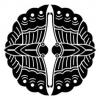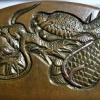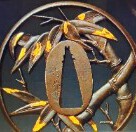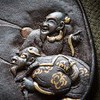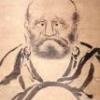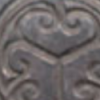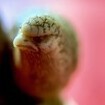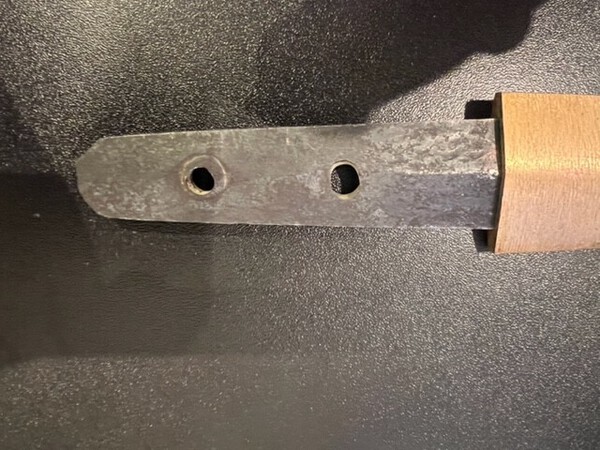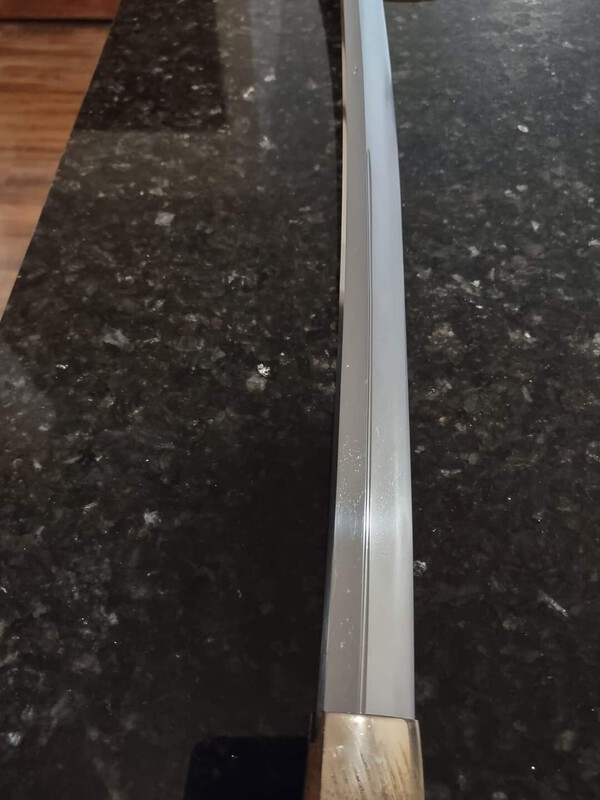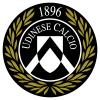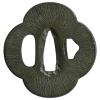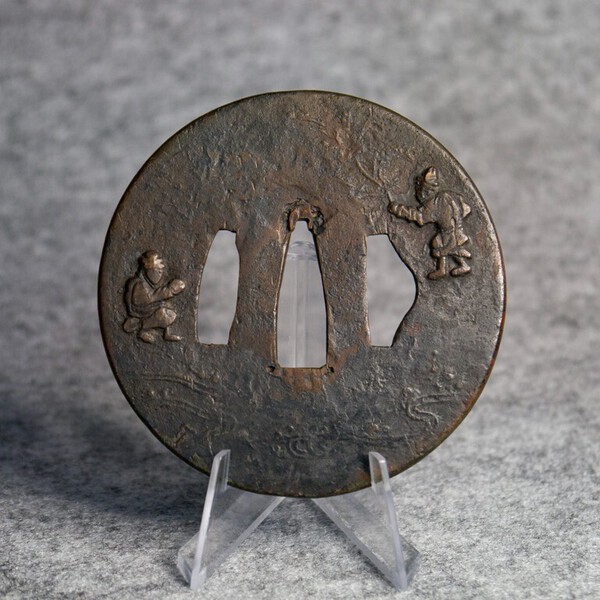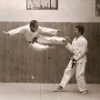Leaderboard
Popular Content
Showing content with the highest reputation on 03/29/2022 in all areas
-
I have a dream to add one Naginata to my collection for a long time In the end, I succeeded and I think it's quite a nice piece So I share just for the pleasure of the eyes of nihonto fans Hizen Shodai Masahiro Mei: Hizen no Kuni Kawachi Daijō Fujiwara Masahiro Kanbun yonen nigatsu kichijitsu (February 1664) Nagasa: 40.8 cm21 points
-
HI Ron. Lovely earlier example. It is as you say, a Momoyama ko-kinko and close cousin to some of the Ko-Mino examples. The butterflies are more distinct than usual, and what makes this an interesting piece to me. Attached is one I purchased in 2014, papered TH and sold about 5 years later. The more I see, the more the early tsuba interesting examples like this are rare. In one of the Ko-Mino books there is a nice diagram page that breaks down the evolution of the rendering of the flowers. From that, you can hone in on a more specific date. I believe it is the 1990s Gifu Museum Catalog-Book on Ko-Mino. At present, I cannot find my copy.5 points
-
Well it's been a while since I posted a kantei topic last time. So I thought why not do it again as I felt the last one was really fun. I hope everyone would enjoy and participate, as it's not too serious. The idea behind this is getting people activated and having fun. The item in question is something that is maybe not too often for kantei, a naginata. I have tried my best on taking photos but unfortunately they are not nearly at the level some members can take pictures. I hope that some details can be seen from the pictures. I have also tried to write a small text following the NBTHK format, having measurements and some text, which should be helpful in the identification process along with the pictures. I might have missed some details as my eye for details is not the best. Also all of the text is written by me so any errors are my errors. All of the pictures are from the same side as unfortunately there is large difference in condition between the 2 sides. I think I will let this run about a week to week and half. So that people interested will have some time to hopefully participate. Naginata Measurements: Nagasa: 45,8 cm Sori: 2,3 cm Motohaba: 2,6 cm Motokasane: 11mm Nakago-nagasa: 44,2 cm Nakago-sori: None Shape: Kanmuri-otoshi-zukuri, iori-mune, mihaba slightly narrow, slight saki-zori, there is some widening towards the cutting area. Forging: Itame with some mokume mixed in, some nagare that is standing out, ji-nie. Small notare with gunome peaks, sunagashi and nie. Utsuri is slightly visible. Bōshi: Sugu with ko-maru Horimono: On both sides naginata-hi Nakago: Ubu, end slightly shortened, 2 mekugi ana, nagamei on omote side and date on ura side.4 points
-
Studying this lovely tsuba with an eye to acquiring it. It is of shakudo and depicts butterflies, peony and plum blossoms. Notice the vertical (up and down) lines of nanako. The mimi appears to be part of the plate. Worn gold highlighting can be seen. The tsuba, I'm told, came from Dean Hartley's collection, so maybe the seller will remember it if on this group. My interest is judged by it being early work of the Momoyama period. I would appreciate having your thoughts on the tsuba. Whatever, it is worth taking a look at just to enjoy the tsuba. Ron STL4 points
-
Hi all, Just picked up two new blades. I’ll be bringing them to the Chicago Show for some ‘in hand’ advice, but figured I would start here for fun. First blade is a wide thick heavy wakizashi with the following information: Mei: Omi no Kami Hojoji Tachibana Masahiro is how I translate it. From what I could find on line, the way a couple of the mei are cut, I believe the mei points to the first generation? Any Masahiro experts want to weigh in on how comfortable they are with this mei? Nothing on other side of nakago. Nagasa: 52.23cm Nakago: 15.1cm Sori: 1cm Motohaba: 3.2cm Motokasane: 7mm Sakihaba: 2.3cm Sakikasane: 5mm Kissaki: 3.7cm Yokote: 1.4cm Weight: 541g Hamon appears wide suguha on first appearance, but abundant ashi give the effect of gunome within the suguha. Attached are a few quick pictures in the sun. There may be some reflections of trees, etc on the blade, but polish is fair. Thanks for any advice or comments.4 points
-
4 points
-
Koto Osuriage Tachi 68.6 cm NBTHK Tokubetsu Hozon Sayagaki by Mr. Tanobe Tachi attributed to the Enju school. Enju is representative of Yamashiro Den it's roots are from the Rai school. This sword was discussed as being a work of Rai Kunitoshi at one point , but due to disagreement it was given the safer attribution of Enju. There were a few spots of Rai grain which caused the discussion. It can be said it's still open to discussion. It has an elegant Tachi shape of late Kamakura ( 1280 ) . This is a summary of the sayagaki.2 points
-
2 points
-
2 points
-
The given kanji should be read as Otsuryūken (乙柳軒) Miboku (味墨) Hamano ( 浜野) Both Otsuryūken (乙柳軒) and Miboku (味墨) are gō, or arts names. Hamano ( 浜野) is a surname, and the name of a school in the Nara tradition. The gō Otsuryūken (乙柳軒) and Miboku (味墨) were both used by Nobuyuki, the third generation of the Hamano school, and Masanobu, the founder of the Ōoka line of the Hamano.2 points
-
Just wanted to share my latest acquisition that was cheap enough to warrant picking up. Signed - Uda Kunimune 宇多国宗 Wakizashi As far as I can tell through the rust/patina, seems to have a chu-suguha hamon at face value Unfortunately due to it’s current state I am unable to discern much regarding the hada and boshi, the blade has a few typical ware about midway through the blade closer to the mune than the hasaki, but otherwise seems to be in descent shape. Most of the scale rust was cleaned off carefully/little by little with an old copper penny which revealed the mentioned ware but not much else. Looking at the nagako, it does appear hamachi and munemachi may have been moved up approximately 1”. Hira-zukuri blade. The fuchi and kashira specifically drew me to this sword as I really liked the chisel work done on both pieces. Seems to be missing a menuki unfortunately and saya itself is not in the best shape. Basic Measurements: Nagasa – 13.75”/35cm/1shaku1sun5bu Nakago – seems to have Katte Sagari yasurime/Kurijiri end Sori – has only the slightest sori, appears to be saki-sori Iori-Mune Motokasane and Sakikasane are ~4.9mm and ~3.9mm respectively Motohaba and Sakihaba are ~27.4mm and ~22.9mm respectively Haven't had an opportunity to sit down and compare signatures to known Kunimune works deeply and the characteristics that I am able to discern, but will do so when the opportunity arises, may also send this in for a window polish when funds permit. Pictures as follows: Pre-Copper Penny light rubbing to remove scale rust Post-Copper Penny usage with majority of scale rust removed: Mei side of the Nagako, edited slightly for better legibility for the signature1 point
-
So as I have been researching this blade on line, I came across what I think is a pretty interesting (yet sad) history of this blade. Of course it is sad that it had to come into my hands due to the passing of a respected member of the collecting community. I hope I can live up to having the opportunity to own it. I found it was auctioned at Bonhams on September 24, 2020. The information about the blade in the catalog matches and the explanation of the koshirae that came with the blade also matches. The blade was one of several that came out of a collection of a Mr Kunio Izuka who (according to the write up that was included in the catalog) helped form the Kenzan Nihonto Club that later became the NY Token Kai. Just thought this was interesting info.1 point
-
It is signed with a tachi mei, so I think my calling it a katana above is incorrect. So if the maker went for a tachi shape that makes a proportionally smaller kissaki make more sense. I do aesthetically prefer katana proportions over tachi.1 point
-
1 point
-
1 point
-
1 point
-
1 point
-
1 point
-
Gentlemen, thank you for all the input. Greatly appreciated. For a non traditionally constructed blade it has a wonderful balance. Perhaps made for someone who knew a little more than the Rikugun Gunto Soho which many Officers were trained in https://dl.ndl.go.jp/info:ndljp/pid/14603691 point
-
Harry Watson never finished that 8th volume of the Nihonto Koza translations. People would come at him for a long time about that.1 point
-
1 point
-
Thanks Jussi, that one was driving me nuts. So I assume this guy then. That alternate Hiro always gets me. Toshihiro (利広), Shōwa (昭和, 1926-1989), Gifu – „Toshihiro“ (利広), civilian name „Chikuhi Teruo“ (築樋輝夫), born May 21st 1916, he worked as guntō smith1 point
-
1 point
-
"Seki ju xxx xxx Norihiro saku" (something) Norihiro from Seki made this. Do you already know about the Showa stamp at top?1 point
-
1 point
-
Hi Stefan, the sword arrived well packed and in very nice condition. And also thank you for the nice conversation and helpfull answers for a newbie like me, thanks Oliver1 point
-
1 point
-
1 point
-
1 point
-
Wow very sad to hear i just learned of his passing, my condolences to his family. He was a pillar of the nihonto community and will be missed and always remembered never had a chance to meet him in person but he helped and pointed me in the right direction when i first started collecting. If theres anything i could do to help im here. Prayers go out to his family.1 point
-
Hi all, this ken puzzles me a bit. It is large with a nagasa of 69 cm. Nice masame hada and suguha hamon. The mounts are different from what I have seen with traditional ken that have a vajra as tsuka. Given the elaborate mounts with a lacquered tsuka I assume this ken was ceremonial (Dharma wheel also represented a couple of times on the mounts) and not a weapon. My estimation is Bakumatsu assuming the Aoi mon are original. Meiji would be a bit strange with aoi mon on all of the mounting. It still puzzles me. best regards John L.1 point
-
Dear John. Thank you for sharing this one, really nice koshirae. Really like the vajra shaped tsuba. I have a much plainer example which I have always associated with Meiji export work. I think aoi mon were scattered about pretty freely after the restoration, an extra selling point for the gaijin perhaps. Are the mounts silver plated brass do you think? If so then that would relate to some of the late tachi koshirae from the same period. Just for interests sake here's mine. All the best.1 point
-
1 point
-
1 point
-
Nagamaki Naoshi ( cut down pole arm ) Nambokucho Jidai ( 1336-1392 ) O Kissaki typical of this period 57.8 cm NBTHK Tokubetsu Hozon attribution to Kaga Sanekage who worked around 1362-68 Sanekage was a student of Shodai Etchu Norishige ( student of Masamune ) Sanekage works are rated Ryo-Wazamono ( very good cutting ability )1 point
-
Koto Osuriage Tachi 68.6 cm NBTHK Tokubetsu Hozon Sayagaki by Mr. Tanobe Tachi attributed to the Enju school. Enju is representative of Yamashiro Den it's roots are from the Rai school. This sword was discussed as being a work of Rai Kunitoshi at one point , but due to disagreement it was given the safer attribution of Enju. There were a few spots of Rai grain which caused the discussion. It can be said it's still open to discussion. It has an elegant Tachi shape of late Kamakura ( 1280 ) . This is a summary of the sayagaki.1 point
-
I could not find a good quality stand, and my first attempt at making one similar to one I had 12 years ago turned out fair. I will post photos later. The clearcoat ran, sadly but I will fix it after it cures.1 point
-
1 point
-
Koto Tachi O suriage 66.7 cm NBTHK Tokubetsu Hozon Nambokucho jidai circa 1350 O Kissaki Sayagaki by Mr. Tanobe The Rai school was founded by Kuniyoshi. The character for Rai means " one who comes" ,the implication is the founder of this school came from outside Japan . Maybe from Korea is one of the theories. The Nanbokucho a period of constant war fare.1 point
-
Probably won't get the answer you are looking for here as most are against the use of antique blades for sport (myself included). Almost all are going to recommend picking up a shinsakuto, they have fairly good prices on the second hand market compared to older blades.1 point
-
Hello All, I own the sword that is pictured in the YouTube video that was posted on here. My grandpa brought it back after fighting at Iwo Jima and I have at home the slip of paper that says why the US that he is allowed to bring back home the sword and also a Japanese rifle. My grandma was the one who gave me the sword once I got older way after my grandpa passed. She also said that the rifle was lost or something many years ago. I do not know much of anything about the model or who made the sword or the origins of it. She took it to someone who restores actual old Japanese swords and she said it would be very expensive to get the handle and blade restored. I'm wanting to do that at least later in life once I have the money. Thanks everyone, Michael1 point
-
8 years overdue, I can’t believe it was launched more than 8 years ago.☹️0 points
-
Wow, thanks Piers! A couple of those swords in the woodblock remind me of the ones Ray S. posts time to time on the for sale forum. I guess I should have stepped up on a couple of the others instead of buying pottery and coins. Now to find a frame!0 points
This leaderboard is set to Johannesburg/GMT+02:00




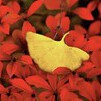











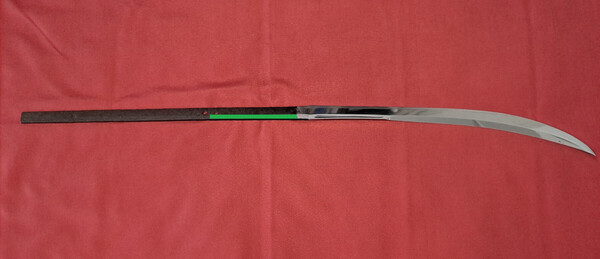


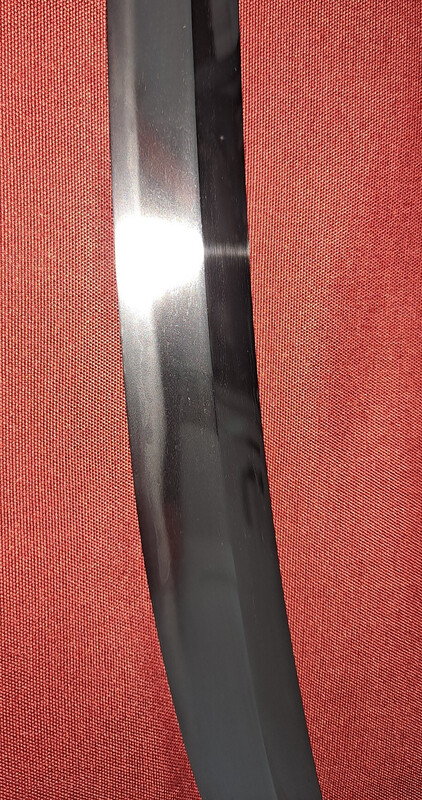





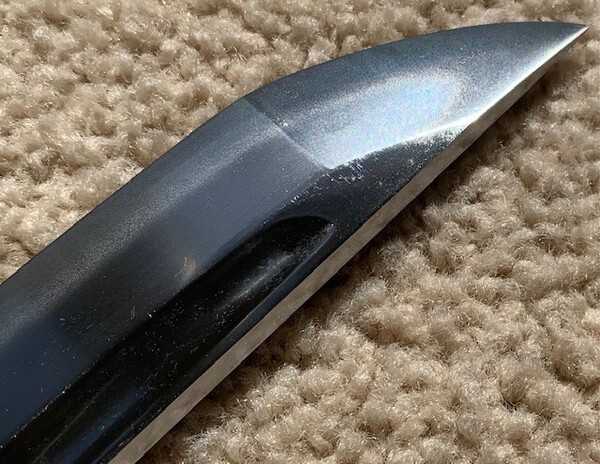





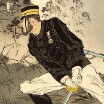
.png.0c3d99903f56c1ac1beac65aeb1e99d0.png)
.png.26117c126bbb9bab7d9f71c474aaed3f.png)
.thumb.png.15f04e7845fdef19110fd08f4950e7fa.png)

